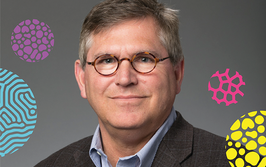Attaining Accurate Authentication
As fraudsters become increasingly knowledgeable and adept, authentication of food and beverages becomes more and more challenging. I was keen to see if GC-Orbitrap technology represented a new tool in the defense of food safety and quality – and Scotland’s centuries-old whisky industry.
sponsored by Thermo Fisher Scientific
My father graduated from the same university as me – the Institute of Chemical Technology Prague – and specialized in inorganic chemistry, so it wasn’t too difficult to decide how I wanted my career to develop. But my father had set the academic bar very high; he was a guru in several weighty fields, including semiconductor research, and also worked for the United Nations on geological research projects. I decided to take a different route through chemistry and joined the faculty of food and biochemical technology. In the beginning, my father was a little disappointed by my choice as he considered it “university cooking”, but it didn’t take him long to realize that food chemistry and analysis was an exciting and cutting-edge field. Indeed, food analysis presents some of the most complicated matrices, which makes trace analysis very challenging at times. I too realized that I’d made an excellent choice and never regretted it.
Bitten by the technology bug
In the early days, I remember using gas chromatography instruments manufactured in Czechoslovakia; currency issues and availability prevented us from exploring imported options. The instruments were complex with many buttons and functions, but worked very well. More importantly, they allowed me to discover a great fondness for separation science – and technology. Even back then, I was doing sensory analysis on GC by removing the FID on repeat experiments and inhaling the scents from the peaks. Later, I moved more firmly into food safety because environmental issues were beginning to drive the industry towards change. I remember using a single chromatograph (funding was still challenging) connected to four selective detectors and an electronic printer; it was high technology at the time and very exciting. I knew I always wanted to be at the cutting-edge in terms of analytical instrumentation.
In the mid-1980s, I did a couple of years as visiting scientist at the Free University of Amsterdam working on very advanced techniques under two renowned chromatographers: Roland Frei and Udo Brinkman (who was head of the Royal Netherlands Chemical Society). Michel Nielen (now at RIKILT Wageningen UR) was my peer and remains my good friend and colleague. We are co-chairing the 7th International Symposium on Recent Advances in Food Analysis (RAFA 2015, www.rafa2015.eu) in November.
When I returned to the Institute in Prague, we started working on many more international collaborations and advanced instrumentation was more readily available. Our strategy was to focus on advances in mass spectrometry – something we continue to do today. We have a huge interest in assessing novel instruments and techniques from all the major companies. When I was asked to evaluate GC-Orbitrap technology ahead of its launch at ASMS 2015, I of course responded positively.
GC-Orbitrap technology – a true novelty
The pace of technological innovation has been startling, but the analytical challenges have also changed tremendously; the two aspects are part of the same cycle. Over the years, technology, such as automated sample injection and the sensitivity increase delivered by triple quadrupole MS (in both GC and LC), have constantly strived to answer the analytical questions of the moment. I was telling my students recently that the current challenges in food analysis are most likely to be addressed by high-resolution MS (HR-MS), which offers so many advantages compared with unit resolution MS/MS.
In the past, I’ve worked with medium resolution time-of-flight (TOF) instruments with a maximum resolving power of about 10,000 FWHM, and then moved onto improved TOFs with about 30,000 FWHM. Orbitrap technology coupled to LC was a real breakthrough, offering resolution up to 60,000 FWHM with high mass accuracy – and further developments increased resolving power in some variants up to 450,000 FWHM (at m/z 200).
Today, Orbitrap is available for GC instrumentation in the Q Exactive GC, which is yet another key advance. I consider myself impartial when it comes to technology, but I can say that GC-Orbitrap technology offers several real benefits. I was particularly impressed with the linearity range of the instrument, which is a limitation of TOF instruments. In ‘fingerprinting’ style studies, relative ratios of responses for features are also diagnostic, so linearity plays a very important role. In our studies, we saw good linearity over six or seven orders of magnitude.
For me, two challenging areas stand out as real opportunities for Orbitrap technology to differentiate itself against triple-quadrupole instrumentation. The first is non-targeted screening, where you wish to confirm whether or not a sample is contaminated with unknown compounds – mycotoxins or other natural toxins using LC-Orbitrap, for example. Here, the combination of full scan and accurate mass is unparalleled, as discussed in my recent lecture ‘Effective Food Safety Control: Pesticide Residues and More within a Single Run’ at the 1st International Symposium on Recent Developments in Pesticide Analysis – you can watch the video here. The second area is food authentication, which I believe is even more challenging. Traditionally, several markers have been used to answer questions of authentication, but with little in-depth knowledge of the matrices and other potential clues. Comprehensive MS fingerprinting using full-scan HRAM data coupled with advanced chemometrics can offer surprising insights into authenticity and classification of samples – something that was not before possible in a single analytical run.
Whiskey or Whisky?
When I tested the Q Exactive GC ahead of its launch, I was keen to benchmark it in three main areas: linearity, sensitivity and selectivity. But more than that, I wanted to assess its potential in the aforementioned area of food authenticity, which is why we focused on several whisky samples in addition to pesticide analysis. I was quite surprised to find that many compounds were identified automatically in both sets of samples, which proved to me that the deconvolution function was working well.
Analyzing the very important food commodity that is whisky seemed like a good idea given the fact I was in the UK. In particular, we were interested to see if we could authenticate whiskies in terms of age, geographical origin, brand and raw materials by building up databases and statistical models from samples of known origin. The end game is to use the data and models generated to assess unknown samples using HRAM fingerprints to gain a probability of authenticity. In our early work with GC-Orbitrap technology, we were fine tuning the method and found that ethyl acetate extraction gave us a good signature in terms of the compounds derived from the oak casks used in the aging process for whisky. As I hinted earlier, I was especially impressed with the linearity across major and minor compounds and the ability to identify ions that could be used to discriminate between whiskies.
A growing wish list of recent advances
Having spent time with GC-Orbitrap technology, what is my conclusion? Well, the Q Exactive GC is on my wish list! Especially as we have plans to establish a center of excellence in food and nutritional science – and that means we need great instrumentation. GC-Orbitrap technology represents the current pinnacle of innovation in that space right now, and would complete my collection – after all, I already have four TOF instruments, including a GC×GC-TOF-MS system.
Over the next few weeks, Michel Nielen and I – along with the rest of the team – will be conducting the strict selection process of oral abstracts for RAFA 2015. We started the conference 14 years ago to place an emphasis on excellence – and, as the name indicates, recent advances in the field – the two aspects that drive our selection process. Notably, we made a decision right from the beginning to separate presentations from independent (academic or industry) scientists and instrument company researchers – though certainly not in terms of quality. Richard Fussell is a perfect example of a quality scientist who will command attention and respect on both sides of the divide. Indeed, vendor lunchtime seminars are always packed and I am sure we will learn more about the Q Exactive GC this November. I will also be very interested to see if anyone will independently present work based on their experience with GC-Orbitrap technology – I’m quite confident we will...
When I was invited to Thermo Fisher Scientific’s laboratory in Runcorn, UK, to test drive GC-Orbitrap technology, I was very curious to learn what added value or extra features it could offer. I can say that it certainly fills a gap – especially in metabolomic style approaches. I also suspect it will have a disruptive impact on certain areas of the mass spectrometry market. My independent advice? Take Orbitrap technology for a spin and decide for yourself.
To find out more: thermoscientific.com/QExactiveGC
Professor and Laboratory Head, Department of Food Chemistry and Analysis, University of Chemistry and Technology, Prague, Czech Republic.

















